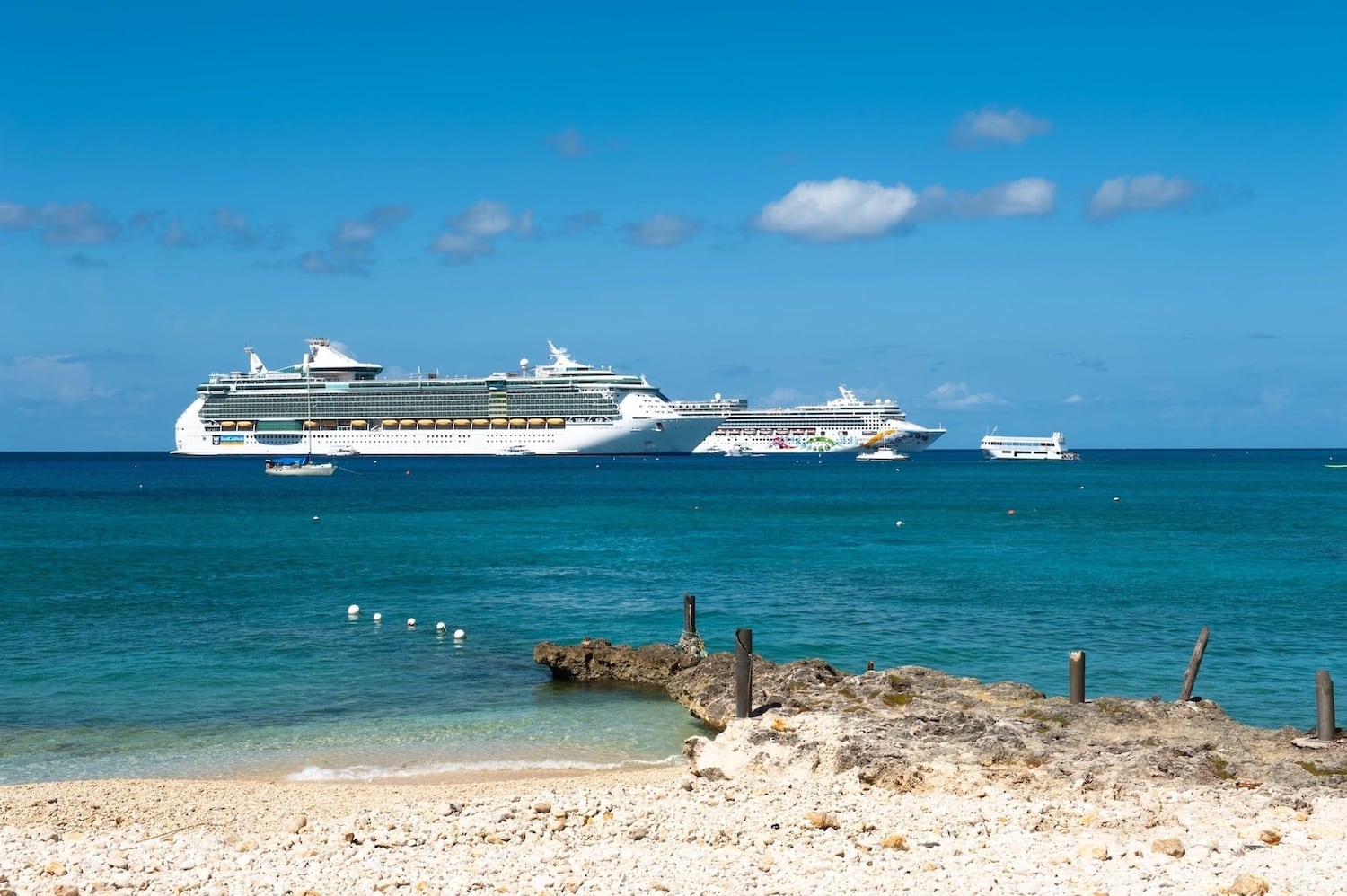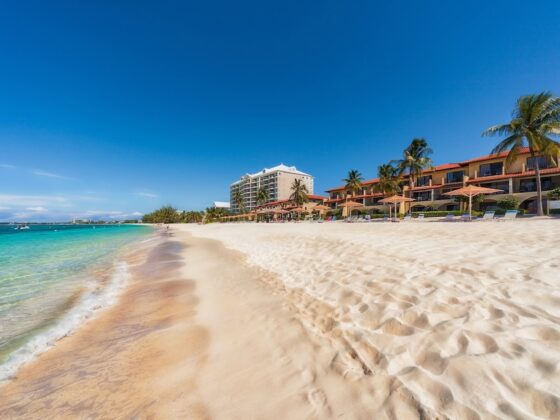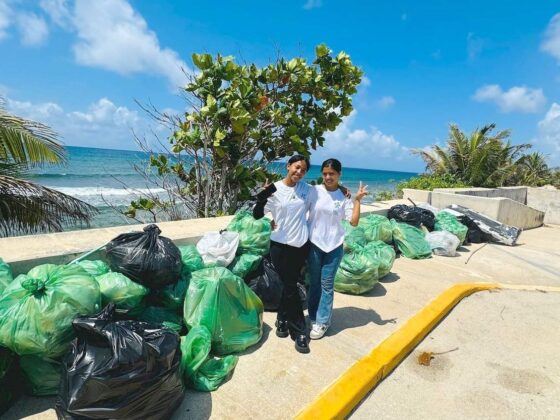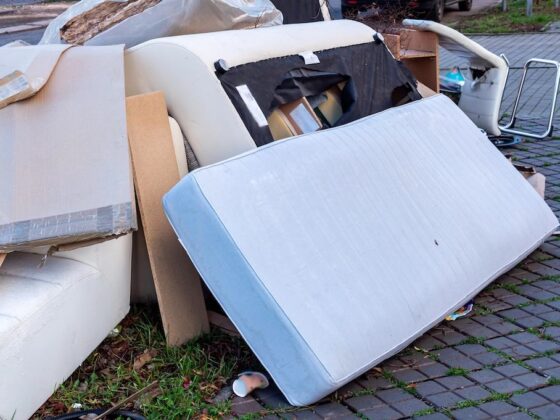The Summer Travel Surge and Measles Concerns
Measles Exposure Risk in the Cayman Islands Remains Active in 2025
For many Cayman Islands families, summer means long-awaited reunions with relatives in the United States, vacation trips to Florida theme parks, or welcoming overseas visitors to enjoy Grand Cayman’s pristine beaches. But this year’s travel season comes with an invisible passenger that health officials across the Cayman Islands are watching closely: measles.
As of July 29, 2025, the United States reported 1,333 confirmed measles cases across 40 jurisdictions, including New York City, Florida, Georgia, Texas, California, and Virginia—marking the highest annual outbreak in over 30 years. The Centers for Disease Control and Prevention (CDC) has also issued international travel advisories due to rising global transmission. As the summer travel season intensifies, the Cayman Islands face continued measles exposure risk, especially from visitors and returning residents traveling from outbreak regions. For Cayman Islands businesses, schools, and healthcare facilities, professional cleaning and disinfection services have become essential preventive measures.
Navigate this complete measles prevention resource using the sections below. Whether you’re a concerned parent, business owner, or traveler, you’ll find specific guidance on vaccination requirements, cleaning protocols, and safety measures tailored for the Cayman Islands community.
Table of Contents

Summer Travel Increases Measles Risk in Cayman Islands
From June through August, the Cayman Islands experience peak tourism. Cruise arrivals at George Town, airport traffic through Owen Roberts International Airport, and family reunions across Grand Cayman bring thousands of individuals into close contact. This seasonal mobility increases the probability of imported measles cases, even if no local transmission has been reported in the Cayman Islands. With an incubation period of up to 14 days, an individual may carry and transmit the virus long before symptoms appear.
The virus requires no permission to circulate. It requires only a single point of entry, a moment of contact, and a susceptible host. In the Cayman Islands, the intersection of high inbound travel, incomplete vaccination coverage, and variable cleaning practices demands more than seasonal awareness. It requires immediate, proactive containment across public, private, and domestic spaces throughout Grand Cayman, Cayman Brac, and Little Cayman.
Measles Outbreak 2025: Global and Cayman Islands Status
Measles Cases Are Rising Sharply Worldwide
According to the CDC, the United States reported 1,333 confirmed measles cases as of July 29, 2025, surpassing the 2019 total of 1,274. Outbreaks have been recorded in more than 30 states, with West Texas alone reporting hundreds of cases, primarily in undervaccinated communities. Three deaths have been confirmed in the first half of the year.
The CDC has issued a Level 1 Travel Health Notice, warning of measles activity in countries across Europe, the Americas, and Asia. According to the World Health Organization (WHO), Belize confirmed its first locally transmitted cases since 1991 in April 2025, linked to travel to Mexico. Globally, an estimated 10.3 million people were infected with measles in 2023.
Cayman’s Position in a High-Risk Travel Network
According to the Cayman Compass, between January and May 2025, the Cayman Islands welcomed more than 180,000 visitors from the United States – the islands’ largest tourism market – along with nearly 17,000 Canadians. At the same time, more than 17,000 Cayman Islands residents traveled to the US, many on tourism visas. These patterns create a two-way risk of viral importation and reintroduction across the Cayman Islands.
According to the Pan American Health Organization (PAHO), 7,132 confirmed measles cases and 13 deaths have been reported across the Americas as of mid-June 2025, representing a 29-fold increase compared to the same period in 2024. Most outbreaks are tied to travel-related transmission and immunity gaps, including incomplete Measles, Mumps, and Rubella vaccine (MMR) coverage and delays in childhood vaccination schedules.
No Confirmed Local Cases—But No Immunity from Exposure
As of late July 2025, the Cayman Islands has not confirmed a local measles case. However, public health officials remain vigilant. In a press release issued on July 11, 2025 by the Ministry of Health, Environment and Sustainability, Chief Medical Officer Dr. Nick Gent urges residents to “stay alert and take preventative action” in response to the rising number of regional cases.
 Loading…
Loading…The Health Services Authority issued travel alerts in April for residents returning from the US, advising them to seek immediate medical attention if they develop fever and rash symptoms. The Public Health Department has ramped up vaccination campaigns, opening a dedicated MMR clinic to increase immunization access across the Cayman Islands. In March 2025, following measles cases reported in Miami, health authorities launched special walk-in vaccination clinics across Grand Cayman and Cayman Brac, emphasizing the urgent need to protect the local population from regional outbreak spread.
Health authorities have emphasized the importance of maintaining high vaccination coverage and ensuring that the territory’s immunization rates meet the 95% herd immunity threshold in all population groups. Infants, immunocompromised individuals, and unvaccinated adults remain at risk. Local health officials continue monitoring the situation and have comprehensive response plans including rapid diagnostic testing to detect and manage any potential cases.
Infectious disease modeling shows that even a single imported case could cause localized transmission in high-contact settings, especially if identification is delayed or environmental cleaning is insufficient. Local conditions—open borders, dense residential patterns, and seasonal crowding—further reduce the system’s margin of error.
Table: 2025 Measles Cases by Region
| Region | Cases (2025 to date) | Trends / Risk Factors |
|---|---|---|
| United States | 1,333 (As of July 29, 2025) | Highest case count in over 30 years; outbreaks in 39 states |
| Americas (PAHO Region) | 7,132 cases, 13 deaths (as of mid-June 2025) | 29x increase; cases in Canada, Mexico, US, Belize, Brazil, Argentina |
| Cayman Islands | No confirmed cases so far | High exposure via inbound/outbound travel; incomplete immunity |
Risk Must Be Measured by Exposure, Not Case Counts
Measles does not require domestic circulation to pose a local threat. Travel patterns, mobility, and immunization gaps are the transmission infrastructure. Current case counts are a lagging indicator. The virus’s incubation and airborne persistence make prevention the only reliable defense. Cayman’s continued absence of confirmed infections reflects timing—not insulation.
How Measles Spreads: It’s Not Just Coughs and Sneezes
What Is Measles?
Measles (also called rubeola) is a highly contagious viral infection that primarily affects the respiratory system. Unlike common colds or seasonal flu, measles is one of the most infectious diseases known to humans, with the ability to spread through airborne particles that can remain active for hours after an infected person leaves a room.
The measles virus belongs to the paramyxovirus family and causes distinctive symptoms including high fever, cough, runny nose, red watery eyes, and a characteristic red rash that typically starts on the face and spreads downward across the body. Before widespread vaccination began, measles was a leading cause of childhood death globally.
According to the CDC, measles can cause serious complications including pneumonia, brain swelling (encephalitis), and death—particularly in children under 5 years, adults over 20, pregnant women, and people with compromised immune systems. This makes prevention through vaccination and environmental hygiene critical for Cayman Islands communities.
How Measles Spreads: Airborne and Surface Transmission
Measles spreads through respiratory droplets released when an infected individual coughs, sneezes, talks, or breathes. These droplets remain suspended in the air for up to two hours, making airborne exposure highly likely in enclosed or poorly ventilated spaces. Unlike some viruses that require close personal contact, measles can infect people long after the carrier has exited the environment.
Surface contamination also contributes to transmission. The measles virus can survive on hard surfaces such as doorknobs, countertops, toys, and shared electronics for up to two hours. Individuals who touch contaminated surfaces and then rub their eyes, nose, or mouth are at risk of infection—even without person-to-person interaction.
The Contagiousness of Measles Is Exceptional
Measles has a basic reproduction number (R₀) between 12 and 18, making it one of the most contagious pathogens known. This means a single infected person can spread the virus to 12–18 others in a susceptible population. By comparison, the R₀ of seasonal influenza is around 1.3.
Contagiousness begins four days before the rash appears and continues four days after. Early symptoms such as fever, runny nose, and cough are often mistaken for the flu or common cold, leading to delayed diagnosis and prolonged community exposure.
Indirect Contact Remains a High-Risk Factor
Transmission does not require direct contact with an infected individual. Exposure can occur simply by entering a space where an infected person had been up to two hours earlier, including classrooms, waiting rooms, restrooms, offices, gyms, and play areas.
Because infected individuals are contagious before visible symptoms appear, many exposures occur unknowingly.
Cleaning Interrupts the Transmission Chain—If Done Correctly
Surface disinfection reduces indirect transmission but only if executed using effective protocols. Disinfectants must be EPA-registered and proven effective against enveloped viruses. Cleaning without disinfection, wiping or dusting without chemical inactivation, does not eliminate measles virus particles.
High-contact surfaces should be disinfected regularly in all shared environments: schools and childcare centers, healthcare facilities, gyms and recreational spaces, public transportation hubs, and hospitality venues.
Environmental cleaning is not a substitute for vaccination. It is, however, an essential parallel defense. Without it, every shared surface becomes a point of risk.
Cayman Islands Measles Risk Factors and Vulnerabilities

High Tourism Volume Sustains Ongoing Exposure Risk in Cayman Islands
Tourism infrastructure in the Cayman Islands—cruise terminals, short-term rentals, resorts, and taxis—relies on frequent occupant turnover, increasing the probability of surface contamination and airborne exposure in enclosed spaces. Asymptomatic travelers in the incubation phase may unknowingly spread the virus within hours of arrival in Grand Cayman, particularly in poorly ventilated or high-traffic environments.
Regional Travel and Family Mobility Compound Importation Risk
The Cayman Islands’ population is highly mobile, with strong familial, business, and medical ties to the United States and United Kingdom. These travel routes create potential risk pathways to measles-affected regions. The risk is demonstrated by recent regional examples: Belize, measles-free since 1991, confirmed its first cases in April 2025, all linked to travel to Mexico where over 3,500 cases have been reported so far.
Summer travel amplifies this vulnerability for Cayman Islands residents. The risk lies in travelers potentially returning from affected regions during the virus’s incubation period, before symptoms appear, creating pathways for introduction into schools, offices, and residential settings.
Immunity Gaps Persist in Both Children and Adults
Although the Cayman Islands maintains relatively high childhood vaccination rates, full population immunity has not been achieved. Herd immunity for measles requires ≥95% two-dose MMR coverage. Current data indicates coverage shortfalls in infants under 12 months (ineligible for vaccination), adults born before 1989 (likely received only one MMR dose), and individuals with religious, personal, or undocumented exemptions.
These immunity gaps are sufficient to enable transmission if an imported case enters a susceptible group. In households, offices, and multi-unit residences, one unvaccinated individual may serve as a silent vector.
Summer Lifestyles Increase Community Transmission Risk in Cayman Islands
From June through August, Cayman Islands schools are closed, and children frequently attend camps, summer programs, and large family gatherings—settings with high interpersonal contact and limited health controls. Families host overseas relatives, attend public events, and utilize indoor air-conditioned venues to escape the heat. These spaces—churches, gyms, restaurants, play centers across Grand Cayman—create ideal conditions for viral spread.
Measles does not require a densely packed environment to spread. It only requires a shared airspace or contaminated surface, making enclosed venues with low airflow and high surface contact inherently high-risk during this season.
Preemptive Controls Are Non-Negotiable
Cayman’s geographic exposure, international connectivity, and seasonally increased population mobility place it on a high-risk trajectory for measles reintroduction. The absence of current confirmed cases reflects lag—not immunity.
The virus would transmit before symptoms appear and survive beyond an infected individual’s presence. In this context, the only effective defense is layered prevention: full MMR vaccination, systematic disinfection of shared spaces, and reduced exposure in high-risk environments.
Professional Cleaning and Disinfection for Measles Prevention

Measles Virus Remains Infectious on Surfaces and in the Air
The measles virus can remain viable on surfaces for up to two hours, particularly in indoor environments with low airflow. During this time, high-contact points—doorknobs, countertops, light switches, handrails, toys, and shared devices—can act as passive transmission vectors. When individuals touch these surfaces and subsequently contact their eyes, nose, or mouth, the virus can enter the body and establish infection.
Airborne particles released through coughing, sneezing, or even breathing can also linger in enclosed spaces for hours. Surface decontamination alone is not sufficient to mitigate airborne exposure but plays a critical role in interrupting the indirect transmission pathway.
Cleaning Without Disinfection Fails to Remove Viable Virus
Cleaning removes visible dirt and debris, but does not inactivate viruses unless paired with proper disinfection. The measles virus is susceptible to inactivation by EPA-registered disinfectants that meet criteria under the Emerging Viral Pathogens Policy.
Common failures in cleaning protocols include using general-purpose cleaners with no antiviral efficacy, reusing contaminated cloths or mops across multiple surfaces, applying disinfectant without respecting the product’s dwell time, and skipping high-touch areas or inconsistent daily schedules.
Without adherence to proper disinfection techniques, cleaning becomes performative—not preventative.
Cayman’s Indoor Environments Increase Surface Transmission Risk
In Cayman, climate-controlled buildings, multi-use public venues, and short-term rentals present elevated surface exposure profiles due to frequent occupant turnover (hotels, Airbnbs), high-volume shared equipment (gyms, schools, co-working spaces), and enclosed layouts with limited natural ventilation.
Without targeted disinfection,these spaces could support indirect measles transmission long after an infected person had left the area.
Sector-Specific Protocols Are Required
Disinfection standards should vary based on the exposure profile of each environment. Examples include:
Daycares and schools: Daily sanitization of desks, toys, restrooms, and shared surfaces.
Clinics and outpatient centers: Hourly wipe-down of patient chairs, pens, door handles, and reception counters.
Hospitality and food service: Turnover cleaning with surface-specific disinfectants, including remotes, appliance handles, and linen contact surfaces.
Office environments: Scheduled cleaning of workstations, keyboards, shared meeting rooms, and restrooms with log verification.
The cleaning workforce must be trained in infection control, not just aesthetic upkeep.
Environmental Hygiene Is a Core Infection Control Strategy
Cleaning is not supplementary. It is part of the infection containment architecture. In the context of measles, an airborne virus with demonstrated surface survivability, environmental hygiene functions as a non-pharmaceutical intervention.
It does not replace vaccination, but it does reduce the likelihood of indirect transmission in shared spaces. Environments without structured, validated cleaning routines represent uncontrolled risk vectors—especially during peak transmission periods or when immunity coverage is incomplete.
For public safety in Cayman, environmental hygiene is not discretionary. It is essential infrastructure.
For a step-by-step approach to protecting your Cayman property, including specific cleaning protocols for homes and businesses, refer to our earlier guide: Measles and High-Touch Surfaces: What Cayman Residents Need to Know Now
Measles Prevention for Cayman Islands Families and Businesses

Verify MMR Vaccination Status Across All Age Groups
Vaccination remains the primary defense against measles transmission. The CDC and Cayman’s Ministry of Health recommend two doses of the MMR vaccine:
- First dose at 12 months (recently updated from 15 months in response to regional outbreaks)
- Second dose at 4–6 years
However, immunity gaps persist. Adults born between 1957 and 1989 may have received only one dose, and some residents lack documentation of immunization. Incomplete coverage undermines herd immunity, which requires ≥95% population-level two-dose compliance.
Action Steps: Check and update immunization records for children, adults, and caregivers; schedule catch-up or booster MMR doses where status is uncertain; and avoid assumptions based on age or past school attendance—verification is required.
Implement Disinfection Protocols in Homes and Shared Living Spaces
Domestic environments are not exempt from exposure, particularly when households include:
- Children too young to be vaccinated
- Guests from outbreak regions
- Travelers returning from high-risk locations
- Immunocompromised or elderly residents
Routine surface cleaning must be upgraded to targeted disinfection: use EPA-registered disinfectants with proven efficacy against enveloped viruses, focus on high-touch areas (door handles, appliance controls, light switches, bathroom fixtures, remote controls), and follow label instructions, including contact time and surface compatibility.
In the event of suspected exposure or confirmed cases:
- Isolate potentially contaminated rooms
- Disinfect shared surfaces before resuming normal use
- Avoid informal cleaning (e.g., dry dusting, unsanitized cloth reuse)
Strengthen Cleaning Protocols in Commercial and Institutional Settings
High-traffic public environments demand structured infection control systems—not reactive hygiene. This includes:
- Workplaces
- Retail stores
- Gyms and studios
- Restaurants and hotels
- Event spaces
- Shared transportation facilities
Recommended Protocols:
- Develop a site-specific cleaning schedule identifying frequency, responsibilities, and surface zones
- Use checklists with supervisor sign-off to ensure procedural compliance
- Train cleaning staff on cross-contamination prevention, PPE use, and product-specific application standards
- Disinfect at minimum once per shift in active zones; increase during peak hours
Failure to document and enforce protocols equates to unmanaged exposure risk.
Ensure Measles-Specific Readiness in Educational and Childcare Facilities
Children’s environments are highly susceptible due to:
- Close contact
- Incomplete immunity
- Poor hand hygiene compliance
- Shared toys and surfaces
Requirements:
- Immunization audits for all enrolled students
- Daily disinfection of toys, furniture, door hardware, toilets, and tabletops
- Exclusion of symptomatic individuals pending medical clearance
- Staff briefings on measles signs, disinfection procedures, and child-specific transmission dynamics
Classrooms, playgroups, and summer programs must function as controlled contact environments, not casual gathering points.
Use Professional Cleaning Services During High-Risk Periods
Professional disinfection services provide:
- Access to hospital-grade products
- Verified application methods
- Trained personnel operating under infection-control protocols
- Documentation suitable for compliance, audits, or legal proof of due diligence
Engagement is appropriate when:
- Hosting guests from outbreak regions
- Managing staff or student populations
- Operating short-term rentals, clinics, or high-footfall facilities
- Responding to known exposure or preemptive risk periods (e.g., holiday travel spikes)
Professional intervention should not be reactive. It should be scheduled, auditable, and risk-aligned.
Layer Vaccination with Environmental Hygiene—Not in Place of It
Vaccines prevent infection. Hygiene limits exposure. Neither is sufficient alone.
MMR compliance, indoor air quality, hand hygiene, and surface disinfection work together to protect vulnerable populations, extend protection to public-facing roles, and prevent silent circulation before case confirmation.
The combined risk posed by travel mobility, urban density, and variable compliance in the Cayman Islands requires that homes, businesses, and institutions do not delay preventive action until after a confirmed outbreak.
Residents can protect themselves by checking vaccination records, regularly disinfecting high-touch areas, and avoiding crowded indoor spaces if outbreaks occur in neighboring regions. Schools and daycares should audit immunization compliance and disinfect daily. Businesses, especially in tourism and hospitality, should invest in professional cleaning services during high-risk travel periods.
At Complete Clean, we follow hospital-grade cleaning protocols designed to reduce exposure in high-contact environments across Grand Cayman. This includes thorough surface disinfection, proper dwell times for products, and cross-contamination prevention—critical steps when dealing with airborne and surface-transmissible viruses like measles.
Cayman Islands Measles Prevention: Key Takeaways
Low Case Counts Do Not Equal Low Risk
The absence of confirmed measles cases in the Cayman Islands is not a reflection of immunity—it is a consequence of timing. Measles does not require active community transmission to pose a threat. It requires a single point of entry, a susceptible individual, and shared space. With high levels of inbound travel, regional outbreaks, and partial population immunity, Cayman remains in a state of persistent exposure.
Waiting for visible cases before acting creates a false sense of security. By the time measles is diagnosed, transmission has already occurred. Prevention cannot follow exposure; it must precede it.
Prevention Is Not a Single Action—It Is a System
Effective measles prevention depends on layered safeguards: vaccination eliminates susceptibility, environmental disinfection reduces exposure, ventilation and spacing limit airborne spread, and isolation of symptomatic individuals contains active transmission. None of these measures are sufficient alone.
Response Delayed Is Control Lost
Measles is contagious four days before symptom onset. It survives in air and on surfaces for up to two hours. It spreads in silence, operates invisibly, and multiplies before detection.
Community response based on visible indicators guarantees preventable transmission. Reactive protocols are structurally misaligned with the biology of measles. The window for control is before confirmation—not after.
Risk Management Is a Shared Obligation
Institutional readiness means nothing without individual compliance. Families must verify vaccination status and limit unnecessary exposures. Schools must enforce immunization policies and maintain disinfection schedules. Employers must protect shared environments and staff. Cleaning personnel must be trained as infection-control agents, not generic labor.
Every failure to act upstream compounds systemic vulnerability.
The Objective Is Containment—Not Reassurance
This is not a crisis. But it is a live threat. The virus is active globally, mobile across borders, and perfectly suited to environments that assume it is someone else’s responsibility.
The goal is not to feel safe. The goal is to be structurally insulated from preventable transmission. That requires verified immunity, documented cleaning, and sustained vigilance—not after cases emerge, but before they do.
Measles thrives where complacency grows. By staying vigilant—through vaccination, surface hygiene, and early response—the Cayman Islands can keep this virus at bay. Learn more about protecting your Cayman Islands family and workplace with professional disinfection services from Complete Clean.
Frequently Asked Questions (FAQ)
This FAQ section addresses the most common questions about measles prevention, cleaning, and health protection in the Cayman Islands during summer 2025. Based on CDC guidelines and local health authority recommendations, these answers provide practical guidance for families, businesses, and travelers.
What is measles and how serious is it?
Measles is a highly contagious viral infection causing fever, cough, runny nose, red eyes, and a distinctive rash. It can lead to serious complications including pneumonia, brain inflammation, and death. Measles spreads through airborne particles that remain infectious for up to 2 hours after an infected person leaves a space.
Are there any confirmed measles cases in the Cayman Islands?
As of July 2025, no confirmed measles cases have been reported in the Cayman Islands. However, health authorities remain vigilant due to high travel volumes with outbreak regions, particularly the United States where over 1,300 cases have been confirmed.
How does measles spread in indoor spaces?
Measles spreads through respiratory droplets and airborne particles when infected people cough, sneeze, talk, or breathe. The virus can survive in air and on surfaces for up to 2 hours, making enclosed spaces like offices, schools, hotels, and restaurants high-risk areas.
Can you catch measles without direct contact with an infected person?
Yes. You can contract measles by entering a room where an infected person was present up to 2 hours earlier. Direct personal contact is not required – the virus spreads through shared air and contaminated surfaces.
What are the early symptoms of measles?
Initial symptoms include high fever, runny nose, cough, and red, watery eyes, often mistaken for cold or flu. Small white spots may appear inside the mouth. The characteristic red rash typically appears 3-5 days later, starting on the face and spreading downward.
How long does measles virus survive on surfaces?
The measles virus can remain infectious on surfaces like doorknobs, countertops, toys, and electronics for up to 2 hours. People can become infected by touching contaminated surfaces then touching their eyes, nose, or mouth.
Who is at highest risk for measles in the Cayman Islands?
High-risk groups include unvaccinated children and adults, infants under 12 months (too young for vaccination), pregnant women, people with compromised immune systems, and travelers returning from outbreak regions like the United States.
How effective is the MMR vaccine against measles?
The MMR (measles, mumps, rubella) vaccine is highly effective. One dose provides 93% protection, while two doses provide 97% protection against measles. The Cayman Islands follows the standard schedule: first dose at 12-15 months, second dose at 4-6 years.
Do adults in the Cayman Islands need measles vaccination?
Adults born between 1957-1989 may need a second MMR dose, as many received only one dose in childhood. Anyone uncertain about their vaccination status should consult their healthcare provider and consider getting vaccinated, especially before international travel.
What cleaning products kill the measles virus?
EPA-registered disinfectants proven effective against enveloped viruses can kill measles. Standard household cleaners without antiviral properties are insufficient. Professional-grade disinfectants with proper contact time are most effective for thorough decontamination.
Should Cayman Islands businesses hire professional cleaning services?
Yes, businesses with high foot traffic – hotels, restaurants, schools, offices, retail stores – should consider professional disinfection services, especially during peak travel seasons or if employees/customers travel to outbreak regions.
How much does professional measles disinfection cost in the Cayman Islands?
Professional disinfection costs vary based on facility size, cleaning frequency, and service scope. Most Cayman Islands cleaning companies offer customized quotes for commercial and residential properties. Contact local providers for specific pricing.
What should Cayman Islands families do after international travel?
Families should monitor for fever and rash symptoms for 21 days after returning from travel. Consider professional home disinfection, especially if traveling from outbreak regions or if household members are unvaccinated or immunocompromised.
Which surfaces need priority cleaning for measles prevention?
Focus on high-touch surfaces: door handles, light switches, countertops, bathroom fixtures, shared electronics, toys, office equipment, and public seating areas. These require regular disinfection with EPA-approved antiviral products.
Can regular household cleaning prevent measles transmission?
Basic cleaning removes dirt but doesn’t kill viruses. Measles prevention requires disinfection with EPA-registered antiviral products, proper contact times, and systematic cleaning protocols. Professional services ensure proper technique and product selection.
What are Cayman Islands health authorities doing about measles risk?
Local health authorities are monitoring regional outbreaks, implementing vaccination campaigns, issuing travel health advisories, operating dedicated immunization clinics, and maintaining rapid response capabilities including diagnostic testing and outbreak containment protocols.
Should schools in the Cayman Islands increase cleaning during measles outbreaks?
Yes. Schools should implement daily disinfection of classrooms, toys, cafeterias, and restrooms using approved antiviral products. Many Cayman Islands schools contract professional cleaning services during high-risk periods to ensure proper protocols.
Is it safe to travel from the Cayman Islands during measles outbreaks?
Travel safety depends on vaccination status and destination. Fully vaccinated individuals face lower risk. The CDC recommends ensuring MMR vaccination before international travel, especially to outbreak regions. Consult healthcare providers for personalized travel advice.
How can hotels in the Cayman Islands protect guests from measles?
Hotels should implement enhanced cleaning protocols, focusing on guest rooms, common areas, and high-touch surfaces. Professional disinfection between guest stays, staff vaccination verification, and clear health policies help protect both guests and employees.
Where can I get more information about measles prevention in the Cayman Islands?
Contact the Cayman Islands Public Health Department, your healthcare provider, or visit the CDC website for current guidelines. For professional cleaning and disinfection services, consult local providers specializing in health facility-grade protocols.
About the Author
Prepared by the editorial team at Complete Clean
This article was produced by the editorial team at Complete Clean, a licensed Cayman Islands-based cleaning service provider founded in 2015. Our team follows CDC guidelines and current public health recommendations to deliver evidence-based information that helps protect families, businesses, and institutions in Grand Cayman.






